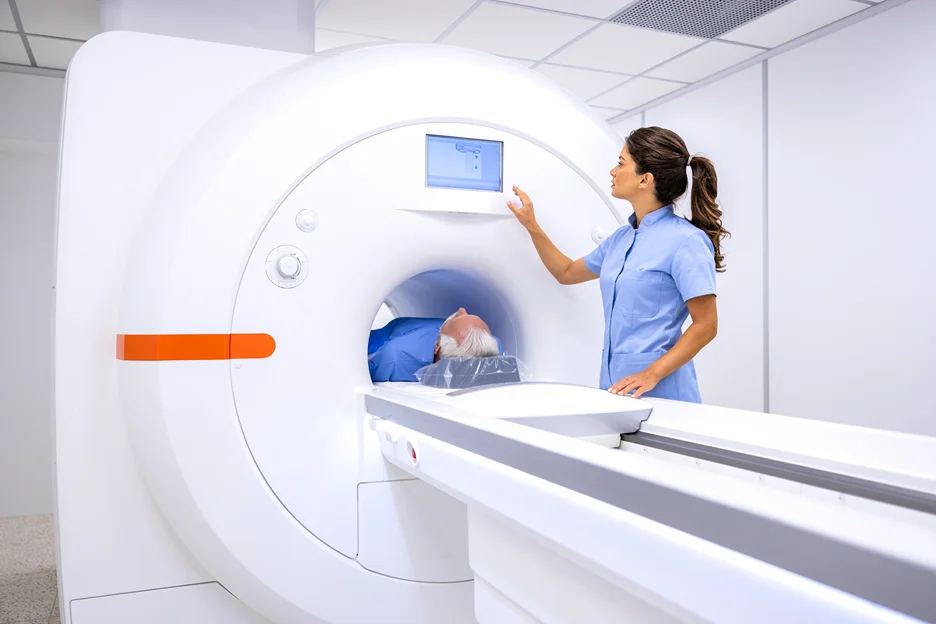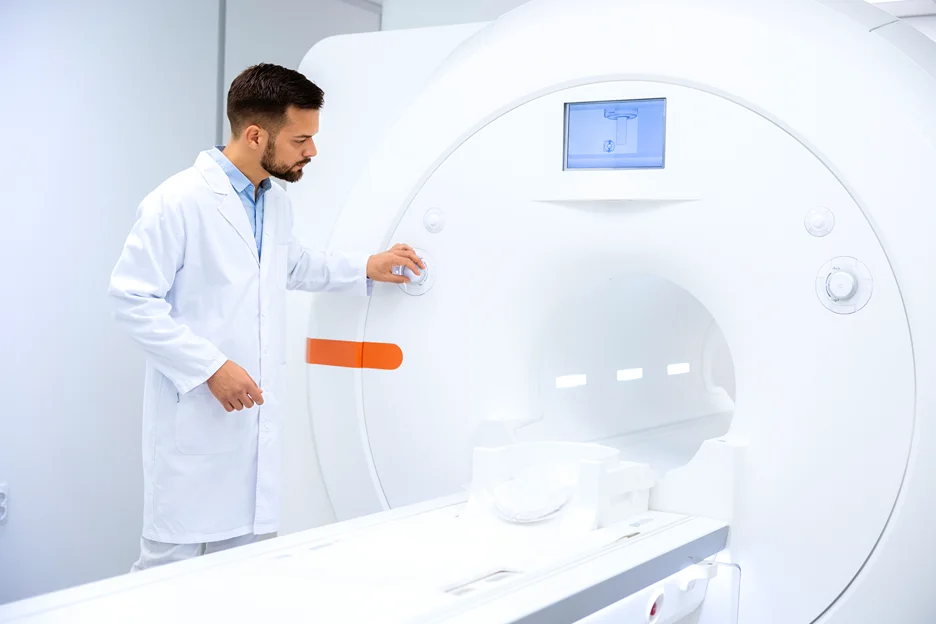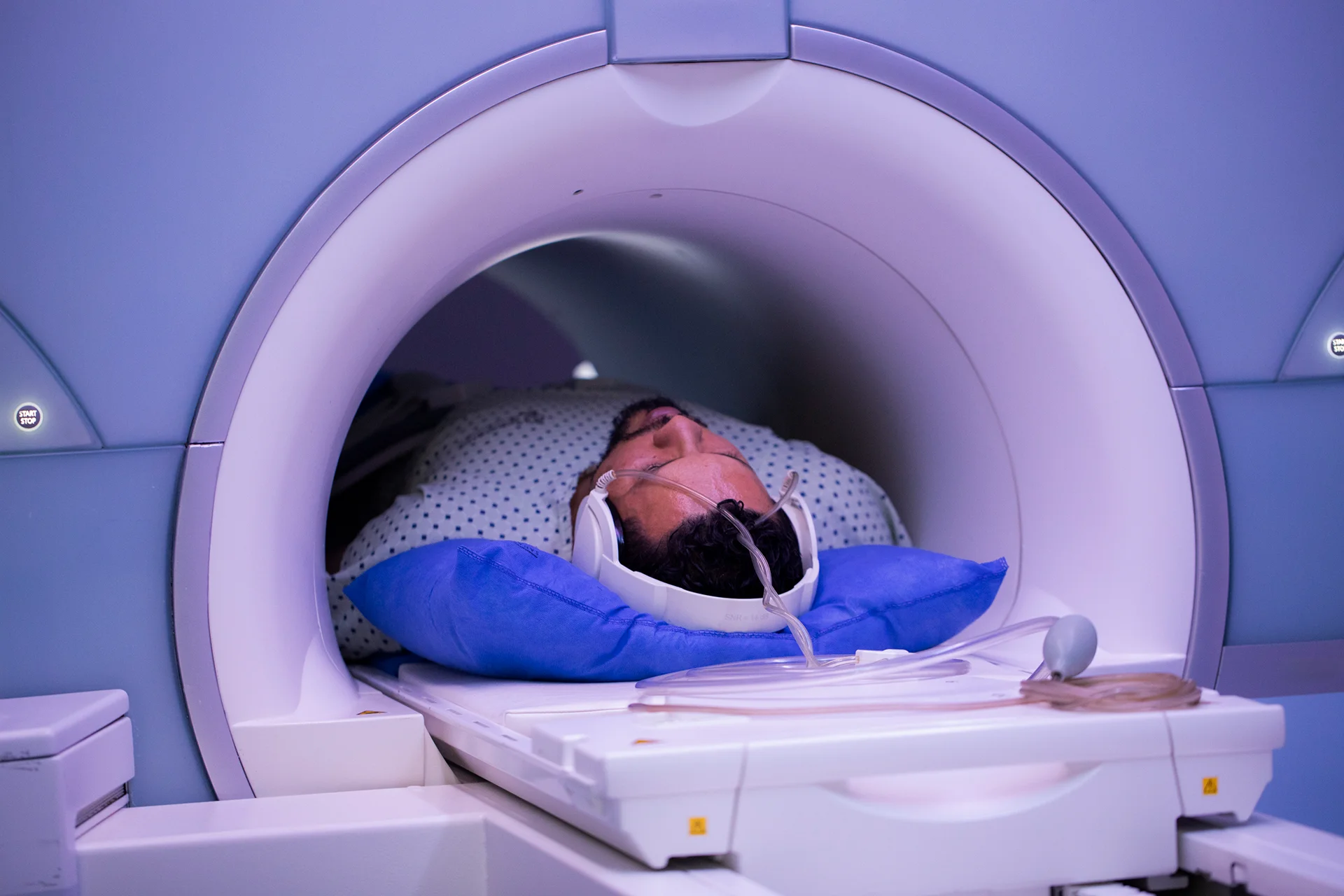When and Why an MRI is Used for Sciatica
Living with lower back pain and sciatica can greatly impact your quality of life. If you’ve tried rest, medications, and physical therapy but are still experiencing debilitating symptoms, your doctor may recommend an MRI scan to identify the underlying cause.
Read on to learn everything you need to know about using MRI for diagnosing and treating lower back pain and sciatica.
What is an MRI and How it is Used for Sciatica

An MRI scan produces high quality images of the spine and soft tissues like discs and nerves. It can show bulging or herniated discs that may be pressing on the sciatic nerve, causing sciatica symptoms like pain radiating down the leg.
MRI is often used to diagnose sciatica when the cause is not clear on x-rays. It allows doctors to examine the spine and rule out other possible causes.
A lumbar spine MRI is commonly used to identify the cause of sciatica symptoms. An MRI scan of the lower back can detect herniated discs or spinal stenosis that may be pressing on the sciatic nerve and causing pain.
Doctors may also request an MRI to diagnose sciatica and examine the discs, spinal cord and nerves in the lower back region. MRI is considered the preferred imaging method for patients suspected of having lumbar disc herniation causing sciatica, as it does not use radiation.
How MRI Helps in Diagnosis
- MRI scans use strong magnetic fields and radio waves to produce detailed images of the body, including the spine and nerves.
- MRI scans are often used by doctors to diagnose sciatica to show herniated discs or other issues pressing on the sciatic nerve like bone spurs or tumors.
- MRI scans are preferred over X-rays for showing soft tissues like discs and detecting causes of nerve compression.
- While MRI results may not always accurately determine if disc issues are causing sciatica symptoms, MRI is still an important diagnostic tool to identify potential causes.
Should I Get an MRI for Sciatica?
Getting an MRI for sciatica depends on several factors:
| Factor | |
| 1 | If your sciatica symptoms do not improve after 6-8 weeks, an MRI may be recommended to identify the underlying cause. |
| 2 | An MRI is generally not advised for sciatica patients initially and is only considered if conservative treatment like rest, medication, and physical therapy are not effective. |
| 3 | MRIs are helpful for sciatica diagnosis when symptoms are severe or accompanied by neurological deficits. They can detect spinal issues causing nerve compression like herniated discs. |
| 4 | Repeat MRIs within 1 year usually do not show changes in patients with low back pain or sciatica who receive conservative care. MRIs are not routinely needed for longitudinal assessment. |
| 5 | Other imaging tests like x-rays are not usually needed for sciatica diagnosis as MRIs provide better visualization of soft tissues. |
If symptoms persist or worsen, discuss your case with your doctor to determine if an MRI would be appropriate to identify the precise source of nerve impingement.
Don’t Let Sciatica Persist – Consult Kaly’s Specialists to Schedule Your MRI Without Delay
Choosing Between MRI and CT Scan for Sciatica

An MRI is generally preferred over a CT scan when evaluating sciatica due to several key advantages:
- MRI does not use ionizing radiation like CT scans do. This makes MRI a safer choice, especially if multiple follow-up scans may be needed over time to monitor the condition. Avoiding unnecessary radiation exposure is always ideal.
- MRI provides superior soft tissue contrast resolution compared to CT. This allows MRI to more clearly detect the anatomical causes of sciatic nerve impingement, such as herniated or bulging discs pressing on nerve roots. MRI excels at visualizing disc pathology and associated nerve root compression.
- While CT scans can also detect herniated discs, MRI is more sensitive for detecting even small disc bulges and subtle nerve root impingement that may be contributing to sciatic pain. MRI is able to pick up on these smaller abnormalities that CT may miss.
- CT scans do provide excellent visualization of bone. So in some cases where a bone spur or fracture is the suspected cause of sciatica, CT may be preferred for its optimal bone imaging capabilities.
- For patients who cannot safely undergo an MRI, such as due to implants or claustrophobia, a CT scan may be used as an alternative. However, CT is generally inferior to MRI for properly visualizing soft tissue causes of sciatica like herniated discs.
Preparing for Your Sciatica MRI
You can eat and take medications as normal before the scan, unless instructed otherwise by the medical team. You may be asked to change into loose, comfortable clothing without metal since anything metallic can interfere with the magnetic field of the MRI machine. Jewelry and other accessories will need to be removed.
During the scan you will need to lie very still on your back inside the MRI tube. The scan may take 30 minutes or more to complete. You may be given earplugs or headphones to wear as the machine is loud.
Let the technician know if you have any pain or discomfort so they can pause the scan if needed. Some claustrophobic patients may require sedation prior to the scan.
The MRI images will be reviewed by a radiologist to check for signs of sciatica like herniated discs, spinal stenosis, or nerve root compression that may be causing your leg pain symptoms.
Getting an MRI for Sciatica? Speak to Kaly’s Experts for Tips on How to Best Prepare for Your Scan
What are the Treatments for Sciatica
If you’ve been diagnosed with sciatica, there are various treatment options available depending on the severity of your symptoms:
Medications
Nonsteroidal anti-inflammatory drugs (NSAIDs) like ibuprofen or naproxen can help reduce inflammation and pain associated with sciatica. Acetaminophen and muscle relaxants may also be prescribed to relieve pain.
Physical Therapy
Physical therapy is often a first-line treatment for sciatica. Under a PT’s guidance, you’ll do exercises to strengthen your back and abdominal muscles which can take pressure off the compressed sciatic nerve. Stretches to improve flexibility as well as massage techniques may also be beneficial.
According to one study involving 110 participants, those who received exercise and pain training (EPT) were more likely to self-report treatment success after 1 year (45.2%) than the usual care group (27.6%).
Steroid Injections
Your doctor may inject a steroid medication around the affected nerve root to reduce inflammation and swelling that is putting pressure on the sciatic nerve. This may provide temporary pain relief.
Surgery
For severe sciatica that is refractory to more conservative treatments, surgery may be considered. This may involve removing a herniated portion of a disc or bony overgrowths (spurs) that are compressing the nerve. Surgeries like microdiscectomy or laminectomy aim to relieve pressure on the nerve.
Alternative Therapies
Options like chiropractic adjustments, acupuncture, yoga, and aquatic therapy may help relieve sciatic pain in some patients. Other alternatives include heat/ice therapy, meditation techniques, and nerve blocks. Evidence on these varies.
In a meta-analysis of 3 studies, acupuncture was shown to significantly reduce sciatic pain recurrence during follow-up. Both warming acupuncture and electroacupuncture subgroups had over 60% lower recurrence risk than massage therapy. Acupuncture appears more effective than massage therapy at preventing recurrent sciatic pain long-term based on these results.
Lifestyle Changes
Improving ergonomics for activities that aggravate sciatica as well as managing one’s weight can help prevent or reduce future flare ups. Quitting smoking is also recommended.
The Takeaway

If you have persistent sciatica symptoms, getting an MRI can help provide an accurate diagnosis and point to the right treatments. MRIs produce detailed images that allow doctors to examine the lumbar spine for issues like herniated discs or bone spurs pressing on nerves.
While an MRI for sciatica is not always necessary initially, it is an important diagnostic tool to consider if symptoms are severe or other treatments have failed. Discuss your options with a doctor to determine if getting an MRI is appropriate for your individual case.
At Kaly, connecting with trusted doctors has never been easier. Our telehealth platform lets you have virtual visits, send messages, and share medical records securely. Sign up today to take control of your sciatica and start feeling better!
